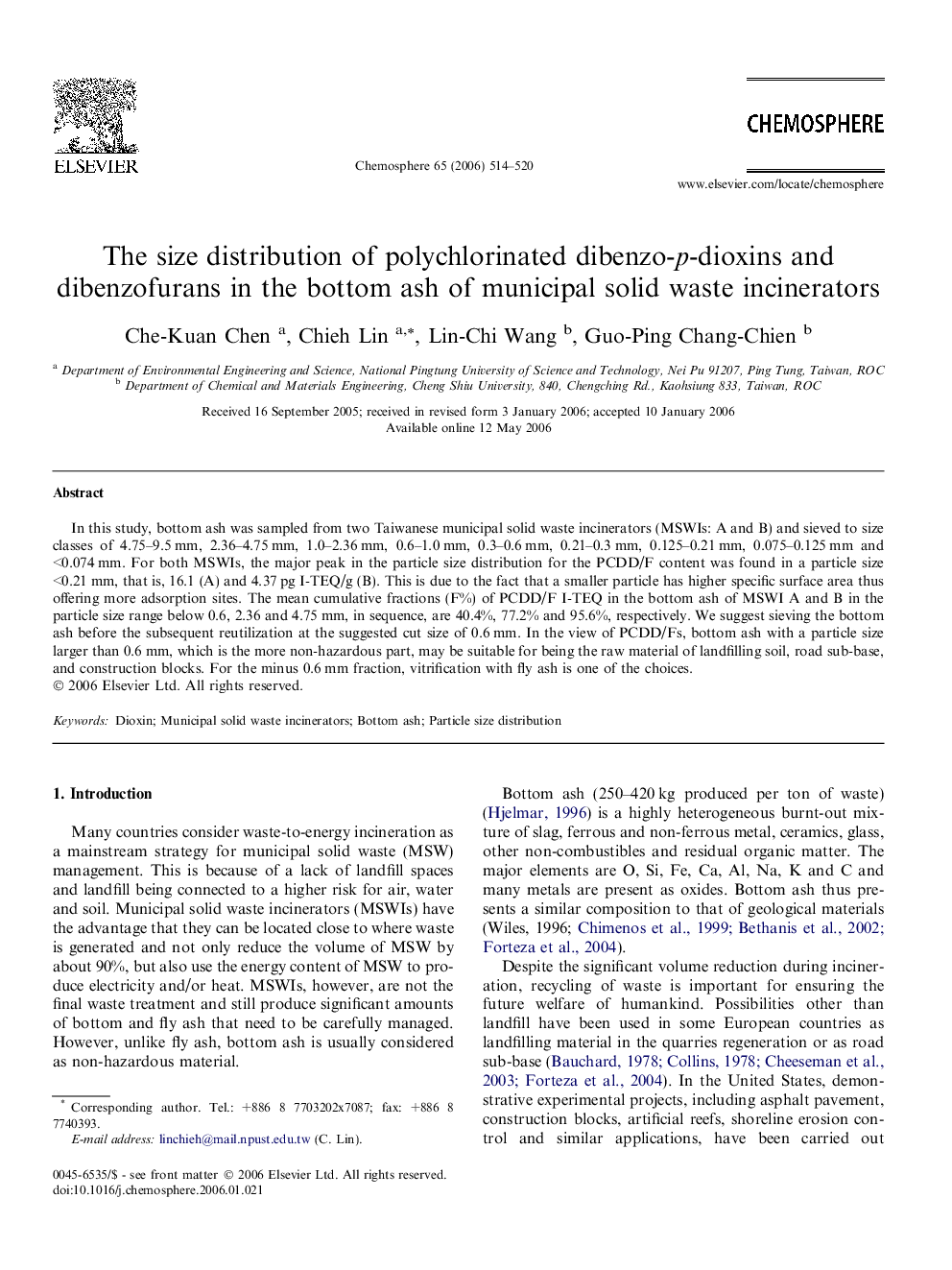| Article ID | Journal | Published Year | Pages | File Type |
|---|---|---|---|---|
| 4416236 | Chemosphere | 2006 | 7 Pages |
In this study, bottom ash was sampled from two Taiwanese municipal solid waste incinerators (MSWIs: A and B) and sieved to size classes of 4.75–9.5 mm, 2.36–4.75 mm, 1.0–2.36 mm, 0.6–1.0 mm, 0.3–0.6 mm, 0.21–0.3 mm, 0.125–0.21 mm, 0.075–0.125 mm and <0.074 mm. For both MSWIs, the major peak in the particle size distribution for the PCDD/F content was found in a particle size <0.21 mm, that is, 16.1 (A) and 4.37 pg I-TEQ/g (B). This is due to the fact that a smaller particle has higher specific surface area thus offering more adsorption sites. The mean cumulative fractions (F%) of PCDD/F I-TEQ in the bottom ash of MSWI A and B in the particle size range below 0.6, 2.36 and 4.75 mm, in sequence, are 40.4%, 77.2% and 95.6%, respectively. We suggest sieving the bottom ash before the subsequent reutilization at the suggested cut size of 0.6 mm. In the view of PCDD/Fs, bottom ash with a particle size larger than 0.6 mm, which is the more non-hazardous part, may be suitable for being the raw material of landfilling soil, road sub-base, and construction blocks. For the minus 0.6 mm fraction, vitrification with fly ash is one of the choices.
